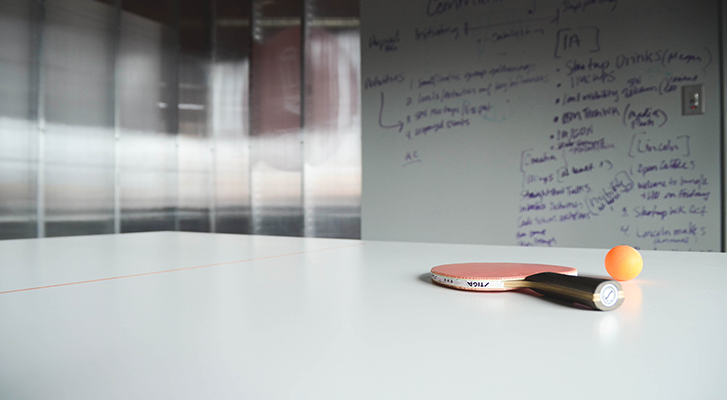It’s probably not a surprise that Amazon has ranked first in customer satisfaction among Internet retailers since 2010 and fourth among all companies, according to the American Customer Satisfaction Index. Amazon is famously customer obsessed. It’s an ideal that is at the top of their list of Leadership Principles, and it permeates the way Amazon does business.
On the other hand, you don’t have to look hard or travel far to find stories of companies doing their customers wrong. Like that time the White Star Line shipping company didn’t stock enough lifeboats for the passengers on its flagship vessel. Or, less morbid but still embarrassing, Dell’s “Della” venture, where they created a line of notebook computers “just for women.”
In cases like these, it’s hard not to stare incredulously at the perpetrators and say, “What on earth were you thinking?” If only they’d run a straw poll, or thought for an entire split-second about what their customers actually wanted or needed.
In your case, the stakes may not seem as high (and in the case of the Titanic, goodness, we hope not). But really delivering for your customers these days is trickier than it may seem, for two main reasons.
It’s the age of the customer. The customer has shifted from someone who needs to be “served” to someone who needs to be “delighted.”
Your customers are not who you think they are. Er, but, it’s obvious, right? Your clients, the ones who pay you (hopefully), are your customers! Of course. But also not really. Their customers are also your customers.
With that in mind, let’s talk a little bit more about customer obsession.
I worked at Amazon and saw firsthand how this philosophy plays out. Amazon is a huge company with a lot of moving parts and many stakeholders along the chain of every business process. But every decision Amazon makes is made with a mind to how the end customer — the person tapping that 1-Click button — will receive it.
For Amazon, being customer obsessed primarily means low prices; fast, reliable delivery; often siding with the customer in case of a dispute with a third-party merchant; and even a good old-fashioned, self-effacing mea culpa.
Amazon also has tons of powerful ways to learn about its customers. At their call centers, managers are semi-famously required to spend two days taking calls and learning from the trenches what Amazon’s customers need and want. Amazon is also very data driven, and they collect details on just about every transaction in their rapidly-expanding universe.
Now, what customer obsession means at Amazon, and how Amazon channels this ideal to deliver meaningful results, may or may not be applicable to Shopify Partners and ecommerce-based businesses like yours. Maybe you can’t afford to fly half your team around the country to interview hundreds of customers on behalf of your client. And maybe you don’t have access to the same reams of data Amazon does. But you can still use the core of this approach to your great advantage, all without having to deal with a lot of the organizational overhead faced by the typical Amazonian.
So what would customer obsession look like in real terms for a small- to mid-size design/development shop working with Shopify stores like yourself?
First, let’s go over the main reasons being customer obsessed can help you make clear and purposeful client decisions.
It neutralizes the playing field. It’s not about you, and it’s not about the client. (Okay, it’s a little bit about the client.) But it’s hugely, monumentally, about the end consumer, the person visiting your client’s site, whom you can hopefully convince to convert to a sale more than two percent of the time. This means you can approach client decisions in a more neutral way, since it’s ultimately less about you or them than it is about the people who are going to pay your client’s bills.
It simplifies decision-making. When in doubt about how to proceed, you can simply turn to the question: “How would the customer respond?” Precisely how you go about answering that question may not be straightforward, but holding this notion as your guidepost can “clear the fog” around any decision you need to make.
It helps you find the best clients to work with. When you’re in early-stage talks with a potential client, use their customer-mindedness as a gauge for how good a fit you’ll be with them. Are they ardently customer focused? Moderately interested in their customers’ needs? Or narrowly driven by internal concepts and what competitor sites are doing? If it’s the latter, it may not be a deal breaker, but bringing this kind of client around to seeing things in a customer-minded way may be a challenge — something that may give you pause when it comes to striking up a fruitful working relationship.
Our work with Chubbies Shorts is a great example of partnering with a client that understands the importance of being customer obsessed. Chubbies came to us to find a way to create a lower-friction experience for their customers when it came to returns and exchanges. We worked with Chubbies to create a front-end utility for their website that would let their customers handle all of their returns and exchanges in a seamless way. From the start, Chubbies had their customers’ needs in mind; they didn’t need our help becoming customer obsessed. In this way, they were in fundamental philosophical alignment with us from the start, which made for a smooth working relationship.
Being customer obsessed sounds simple enough. It’s a seemingly basic concept — but one that can be tricky to keep at the forefront in practice. Here’s how to keep your customer obsession game strong.
Test, test, test

I’m talking about data. Get it. Use it. Being customer obsessed isn’t so much about just thinking about the end customer, as it is about understanding their needs and behaviors. Intentions are good, but data is better.
We also worked with Chubbies Shorts to improve their site’s navigation menu, which they felt was confusing shoppers and likely dampening sales. They had one new idea in mind that they thought would click with customers. We proposed two additional options: the first one a variant on their proposed new menu, and the second one a novel concept we felt could hit it out of the park. We had a solid hunch that our novel variant would come out on top because of our assumptions about how customers would respond to it. But we had to test that hunch.
In the end, the novel design indeed won out (with our other variant in second place). But it was the field testing and hard data that cemented things for the client.
Your skills, experience, and objectivity will serve you incredibly well in conceptualizing smart, customer-focused improvements for your clients. We had brought something to the table that the client — as customer focused as they already were — hadn’t even considered. But we didn’t go to war on a hunch, and you shouldn’t, either. Focusing on the end customer can indeed simplify decision making, but make sure you can defend those customer-focused decisions to your clients — ideally with data — so they feel confident that you’re helping them make the right decisions for their business.
You might also like: 5 of the Best Prototyping Tools to Test Out Your Web and Mobile Designs
Don’t worry about the competition

Sometimes, a client turns to their competitors for ideas on how to improve their website experience — sometimes out of fear that those competitors are overtaking them, or a desire to keep up with the Joneses, but often just because competitors are the easiest examples to follow.
One of our client projects at Rocket Code involved upgrading the customer experience on a client’s legacy website where clicking the shopping cart icon took customers to a new page with no clear option to continue shopping. No bueno. Our mission was to design a navigation bar with a built-in quick cart — one that would let customers modify their orders or proceed to checkout while remaining immersed in the shopping experience. This way, those shoppers would be more likely to stay on product pages and buy more goods.
We mocked up some design previews that achieved this aim in a non-invasive way.
But the client wasn’t pleased with these first takes because they didn’t closely resemble the “carts” on other ecommerce sites the client had seen. It became clear to us that the client wanted a certain aesthetic, and was not thinking about the user experience in the way we were. The client had overestimated the importance of the information available to them — what’s known as the availability heuristic — and it was clouding their judgment.
Initially, we empathized. The client sent over examples of other websites that we analyzed, and we revised our designs to better fit the client’s expectations. But we soon realized that this was not putting the customer first. We decided that the best way to help the client see the merit of our initial designs was simply to better explain to them the functionality inherent in those mockups, and how they would improve the customer experience.
We were being customer obsessed from the outset — we just needed to follow through on it with the client. By being more explicit about the customer-focused logic behind our design previews, we were able to more clearly show the client the merit in those designs. We also learned that communicating our mission to put their customers first — rather than expecting the client to read our minds — can potentially save time and headaches down the road.
Think longterm

Don’t be afraid of decisions that could hamper the customer experience in the short term, but may likely be better in the long term. Immediate customer gratification isn’t necessarily a bad thing, but it shouldn’t always be the objective. Some things just take time.
As an example, a lot of retail brands send out discount codes to their mailing list subscribers at such a furious pace that customers might never need to pay full retail price for their gear. Cool for bargain hunters, but are these brands losing out on margins and potentially some of the luxury cachet and brand equity that come with higher price points? Perhaps.
So if your client is asking you to field-test some new coupon delivery ideas, by all means run some tests. But also encourage them to think more widely about the types of customers they want to attract, the kinds of customer experiences they want to create now and in the future, and the kind of brand they want to be to those customers.
What's your approach to decision-making with your clients? Let us know in the comments below.
Read more
- How to Collect the Right Information from Your Clients
- Grow Your Business With This Free Book
- Data-Rich: Use Holiday Data to Enhance Your Client's Conversion Strategy
- What I Learned From Being My Own Client
- 5 Practical Ways to Help Your Clients Deal With Supply Chain Issues
- 4 Conferences You Should Attend
- Learn from the Shopify Experts Who Won Build A Business
- How Driving Quality Traffic Will Boost Conversion
- How to Set Your Client’s Branding Apart
You might also like: How Building Customer Relationships Will Help You Create a Million Dollar Business

